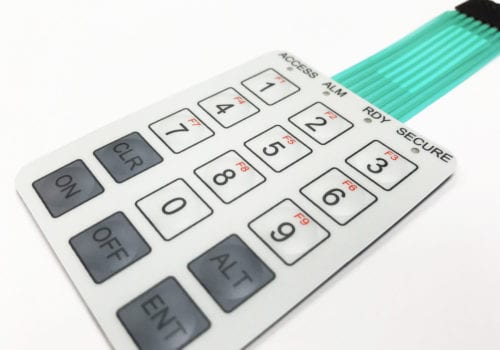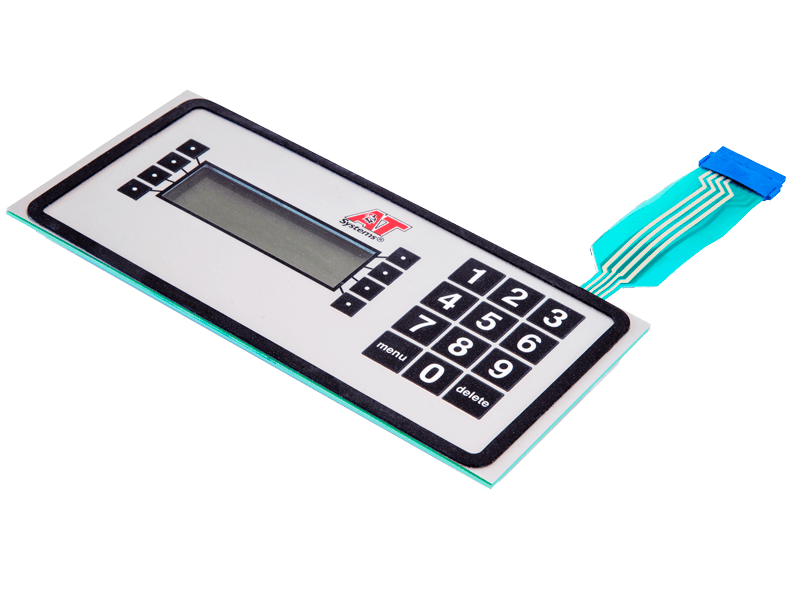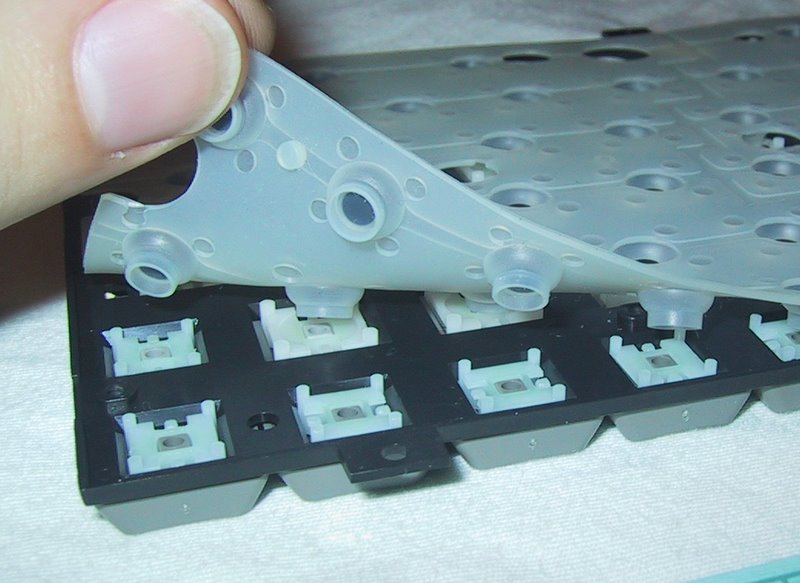Choosing a local membrane switch manufacturer can cut down on lead times and transportation costs.
Everything About Membrane Layer Switch Over: Recognizing Its Style and Functionality
When you think of the control user interfaces in modern gadgets, membrane buttons often come to mind. These elements are a lot more than just buttons; they mix layout and capability flawlessly. Understanding how they work and what makes them efficient can alter your viewpoint on day-to-day electronics. There are nuances to their style and efficiency that you could not be mindful of. Allow's discover what collections membrane layer switches over apart from other control systems.
What Are Membrane Switches?

Their smooth nature makes them very easy to tidy and resistant to dirt and moisture, an essential feature in several atmospheres. Membrane switches can additionally be tailored relating to shape, size, and graphics, enabling makers to produce one-of-a-kind user interfaces customized to details items. Plus, they're lightweight and slim, which helps in decreasing the general mass of gadgets. Generally, membrane buttons play a substantial function in enhancing user experience across a broad array of applications.
Exactly How Membrane Switches Over Job
When you push a key on a membrane layer button, it triggers an uncomplicated yet reliable mechanism. membrane switch manufacturer. The top layer, usually made of flexible product, presses down onto a conductive layer beneath it.
You'll observe that the tactile comments varies based upon the switch design, using either a soft click or a much more obvious feedback. Once you release the secret, the membrane layer go back to its initial position, resuming the circuit and stopping the signal. This process takes place virtually immediately, ensuring a responsive individual experience.
Membrane layer buttons are preferred due to their resilience and resistance to dirt and moisture, making them perfect for different applications, from home home appliances to medical tools. Recognizing this procedure aids you value their prevalent usage.
Key Parts of Membrane Layer Buttons
Comprehending the key parts of membrane layer buttons is basic for grasping their functionality and design. The protective layer guards against environmental variables and wear, prolonging the switch's life expectancy. By recognizing these elements, you'll obtain understanding right into exactly how membrane layer switches operate and their importance in numerous applications.
Products Used in Membrane Switch Over Style
The performance and durability of membrane switches heavily rely on the products made use of in their design. You normally encounter polyester and polycarbonate as primary substratums as a result of their outstanding toughness and flexibility. These materials resist scratches and chemicals, making them suitable for demanding settings.
The conductive layers commonly utilize silver or carbon, chosen for their integrity and conductivity. membrane switch manufacturer. Silver offers exceptional performance, while carbon is an economical alternative. For the overlay, you might think about a matte or glossy surface, relying on your visual needs and customer experience
Adhesives play a vital role too; they bond layers securely and assure durability. Ensure to choose adhesives that endure ecological variables like temperature and moisture. Finally, don't ignore the relevance of a good printing technique for graphics, as it boosts both performance and visual allure. Picking the ideal materials will assure your membrane layer switch stands the test of time.
Style Considerations for Membrane Layer Buttons
While making membrane layer buttons, it's crucial to consider numerous elements that affect their functionality and customer experience. Beginning by concentrating on the layout and button size; ensure they're user-friendly and very easy to navigate. Take into informative post consideration the tactile responses you intend to give-- will users need a noticeable click or a softer touch? Furthermore, think of the materials you'll use, as they'll impact longevity and aesthetic appeals.
Confirm your design fits ecological aspects, like moisture or temperature variations, which can impact efficiency. By very carefully thinking about these aspects, you'll produce a membrane layer button that improves functionality and contentment.
Applications of Membrane Layer Switches
Membrane layer buttons are flexible components located in numerous applications, from commercial tools to consumer electronics. You'll see their impact in machines that require durable interfaces and in tools that take advantage of streamlined layouts. Recognizing these applications aids you value the capability and usefulness of membrane layer switches in daily modern technology.
Industrial Equipment Usage
When you're looking to enhance the capability of industrial tools, membrane switches use a trusted service that incorporates toughness with user-friendly style. These switches are best for harsh atmospheres, giving resistance to dust, dampness, and chemicals. Accept membrane layer switches to enhance your operations and boost total performance.
Customer Electronic Devices Combination
In the domain name of consumer electronic devices, membrane buttons play an essential function in enhancing customer communication and gadget functionality. You'll discover them in devices like microwaves, push-button controls, and pc gaming consoles, offering a seamless means to interact with modern technology. Their smooth style allows for simple assimilation right into various products, making controls user-friendly and straightforward. With their ability to integrate graphics and backlighting, you can appreciate a modern-day aesthetic that complements the tool's overall look. Membrane switches likewise assure toughness and resistance to dust and wetness, expanding the life-span of your electronics. By selecting membrane layer buttons, you boost not simply the functionality but also the design of your gadgets, making everyday communications smooth see page and satisfying.
Benefits and Disadvantages of Membrane Switches
While membrane switches use a variety of benefits, they additionally come with some downsides that you ought to consider. One considerable advantage is their portable style, making them ideal for space-constrained applications.

Nonetheless, there are downsides. Membrane layer switches can have a see page much shorter lifespan compared to mechanical buttons, especially under hefty usage. They can likewise be less tactile, which could affect individual comments throughout procedure. If harmed, repairing them can be difficult and usually calls for complete substitute. Inevitably, their sensitivity to extreme temperature levels and ecological conditions may limit their performance in certain settings. Stabilizing these advantages and disadvantages will certainly help you identify if membrane layer buttons are the appropriate fit for your project.
Regularly Asked Inquiries
The Length Of Time Do Membrane Layer Switches Generally Last?
Membrane switches commonly last in between 5 to one decade, relying on use and ecological problems. You'll wish to review variables like wear, direct exposure to wetness, and temperature level changes to gauge their long life properly.
Can Membrane Switches Over Be Customized for Details Layouts?
Yes, you can tailor membrane layer switches to fit particular designs (membrane switch manufacturer). You'll have the freedom to pick shades, forms, and layouts that match your job's requirements, ensuring they mix flawlessly with your overall visual
What Is the Expense Variety for Membrane Switch Over Production?
The expense array for membrane layer button production generally drops between $1 and $10 per unit, relying on variables like style intricacy, quantity, and materials. You can get quotes from manufacturers to locate the very best option.

Are Membrane Switches Water Resistant or Immune?
Membrane layer switches can be developed to be waterproof or immune, relying on materials made use of and building approaches. If you need them for wet settings, ensure you specify those requirements during the layout process.
How Do Membrane Layer Switches Over Compare to Traditional Switches?
Membrane buttons are typically thinner and a lot more flexible than typical buttons, supplying a smooth design. They're frequently easier to cleanse and integrate, however could not provide the tactile responses you're utilized to with mechanical choices.
Conclusion
